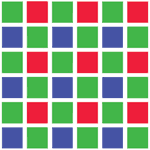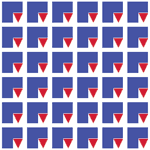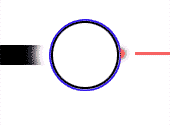The Science of Photography - Digital Image Processing
|
Chemical Image Processing | Digital Image Processing Subject Lighting | Halftone Reproduction | Mechanical Printing |
- Overview of Digital Image Processing
- Early Electronic Photography
- Digital Image Recording
- Digital Image Acquisition
- Colour Recording using a Digital Image Sensor
- Digital Image Sensors (CCD and CMOS)
- File formats, Compression and Storage
- Digital Image Processing and Manipulation
- Printing the Image
| Overview of Digital Image Processing |
All stages of traditional chemical based photography can now be performed by electronic digital processing. Digital imaging includes recording the image, storing the image, manipulating the image and outputting the image. Move your mouse over the links below to highlight each element of the overall process.
 |
||||||||||||||||||||||||||||||
|
| Early Electronic Photography |
Electronic photography has been in existence since the 1930’s, the first television transmission being made by the BBC on the 2nd November 1936 from Alexandra Palace.
The cameras the BBC used were based on imaging tubes using thermal valve principles. Imaging tubes were the standard television capture device until the 1970’s when Charged Coupled Devices (CCDs) were first introduced.
Although the CCDs designed
for television cameras produce excellent video pictures their use for still
images were greatly limited by the small amount of image information they
could record. During the 1980's higher definition CCDs were developed for
use in digital cameras. By the late 1990's CMOS (Complimentary Metal Oxide
Semiconductor) technology was also being used to make image sensors for
cameras.
| Digital Image Recording |
The CCD or CMOS image sensor uses the property of photodiodes to produce an electrical charge when exposed to light. A single device may contain millions of sensor sites, known as picture elements or ‘pixels’, laid out in rows and columns forming a matrix. Each site has an electrical charge proportional to the amount of light falling on it, anywhere in the region of 0 to 2 volts.
These continuous tone signals are called analogue signals. However a computer can only handle digital signals, these are specific binary values with 0 representing black and 255 representing the brightest value in an 8 bit system.
Digital images emulate continuous tone by having so many step changes the human eye believes it is seeing a smooth tone graduation. The illustration below shows a continuous tone image being reduced in tonal values, move your cursor over the links to see the changes.
|
The following picture shows how the number of pixels determines the resolution of the image, move your cursor over the links to see the changes.
|
| Digital Image Acquisition |
There are at least two methods of acquiring a digital image. Traditional photographs, transparencies or negatives can be scanned and cameras can directly record digital images.
Digital cameras, in their simplest form, use the principle of lens, shutter and film as found in traditional cameras. However instead of silver halide based film, refer to Chemical Image Processing, a digital camera uses a CCD or CMOS sensor to record the image. Please refer to the Camera Basics section for more information.
The image capture process of a digital camera is almost instantaneous as all the sensors are exposed at the same time also the number of pixels is fixed, therefore the image captured has a fixed resolution.
Several types of scanner are available, the cheapest and most widely used is the ‘flatbed’ scanner, higher resolution negative and drum scanners are also available. For most desk top scanners the subject is recorded by moving the image sensor directly, or indirectly via a mirror arrangement, across the image plane.
Unlike a digital camera a
scanner's image resolution can be controlled by adjusting the movement
of the sensor, the main disadvantage is the time taken to record an image,
but this is not necessarily an important factor with scanners but would
greatly reduce the potential subject matter of a camera.
| Colour Recording using a Digital Image Sensor |
A digital image sensor (CCD or CMOS) converts light into electrical voltage but, like the silver halides in a traditional film emulsion, cannot record colour directly. Therefore the principles of traditional chemical emulsion colour reproduction have been applied to digital imaging.
In the middle of the 19th century Clerk Maxwell demonstrated the formation of colours by mixing red, green and blue light in a process called the additive system.
Red, green and blue (RGB) channels are stored within a digital image to enable them to be combined on output to form any colour in the visible spectrum.
In order to record red, green and blue colour channels it is necessary to make the sensors sensitive to red, green or blue light by the use of filters. As in the pioneer days of chemical colour photography more than one electronic method of applying the filters has been devised.
One way to record colour is to use three CCDs, sensitive to red, green and blue light. Light from the subject is split into three by a prism, each CCD then records a single colour channel.
Another system uses one CCD and a rotating disk with three filters, as the disk rotates three separate images of the subject are recorded by the CCD through a red, green and blue filter.
However a filtered CCD / CMOS system is the most common method. A filtered sensor has a filter applied to each site. Clusters of four sites produce a single combined colour signal.
Since the brightness of the image is recorded across all sites the image resolution is not altered by the use of filtered sites. However the colour information in the image is only a quarter of the image's resolution, but the image still appears normal to the human eye.
The response of a digital image sensor
to the colour spectrum does not match that of the human eye and filters
have to be added, in addition to the colour separation filters, to reduce
the sensor’s sensitivity to the near infrared end of the spectrum.
| Digital Image Sensors (CCD and CMOS) |
CCDs (Charged Coupled Devices) were the original digital image sensors first introduced in the 1970s, however CMOS (Complementary Metal Oxide Semiconductor) sensors are being increasingly used. CMOS technology was invented in the 1970's but it wasn't until the 1990's that fabrication became a practical proposition.
Both CCD and CMOS image sensors are pixelated metal oxide semiconductors, they accumulate signal charge in each pixel proportionally to the illumination. These variable charges are analogue signals and in order to process this data the signals need to be converted into digital format by the aptly named 'Analogue to Digital Converter' (ADC).
With a CCD sensor a single ADC is located on a separate microchip, with CMOS technology supporting circuitry, such as ADC and amplifier, is located at each pixel site. This supporting circuitry at each CMOS pixel site reduces the area sensitive to light, the illustration below shows the difference between CMOS and CCD sensor sites.
Data from each CMOS sensor site can be read independently however the information recorded on a CCD is read one line at a time into a common ADC.| Like a conveyor belt CCD information is moved towards the ADC for processing into a digital signal, as illustrated here. | 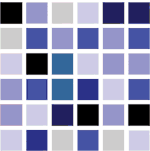 |
The analogue value for each CCD pixel site is stored as a charge in a ‘potential well’ attracted by an applied voltage, held in place by lower voltages on either side. The illustration below shows the three phased system, used in most CCDs, moving the analogue signals to the right.
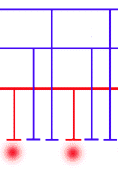   |
CCD Key Points :
|
CMOS Key Points :
|
| File formats, Compression and Storage |
The digital data making up an image is stored in a file. The ‘raw’ digital information for an image takes up a considerable amount of space. For example a 10 by 8 inch colour print scanned at 600 dpi (dots per inch) will result in about 85.5 Mb (Megabytes) of raw data.
Physical storage within a computer, and especially in a digital camera, is limited. The smaller the file the less storage space it will require. In order to reduce storage requirements files are compressed. Compression relies on the fact that digital images generally contain duplicated information, for example common areas of brightness or repeating patterns.
File formats refer to how digital data is stored and which compression processes, if any, have been applied. There are many different methods for compressing images, however they all fall into two types, ‘lossless’ and ‘lossy’.
The lossless data compression method, as the name implies, does not lose any information during the compression and decompression process. The lossy data compression method removes unimportant data from the image, on decompression the image is not mathematically the same as before compression. However visually the image may look identical.
Statistical data compression techniques, originally developed for computer text files, were first applied to digital images in the late 1970s with the TIFF (Tagged Image Format File) format. Later Compuserve developed the GIF (Graphic Interchange Format) file format for use on the internet.
The TIFF and GIF statistical compression processes are lossless. Many other lossless file formats are available, most relate to specific software applications, for example Adobe’s Photoshop, that need to store additional information with the image data.
The most common lossy file format is JPEG (Joint Photographic Expert Group). The format was introduced in 1991 following the work of the group in the late 1980s. Their brief was to define a standard for compressing photographic images.
JPEG compression is based upon the human eye’s greater response to changes in brightness than colour. The image data is separated into blocks and a series of mathematical algorithms are applied to brightness (luminance) and colour (chrominance) values.
Various levels of JPEG compression can be specified and large reductions in file sizes can be obtained, often in the region of 20 to 1, without visible reduction in image quality. However image quality is a subjective issue and excessive compression will lead to loss of visual quality.
The diagram below demonstrates the loss of image quality as the JPEG compression is increased, move your cursor over the links to see the image change.
Once the image has been compressed and converted into a specific file format it needs to be physically stored. For scanners and other recording devices directly connected to a computer the digital images are stored on one of the many possible computer storage devices.However for storage within
a portable camera bulk and weight have to be taken into consideration and
a new generation of credit card sized removable storage media are available.
| Digital Image Processing and Manipulation |
Digital images, like traditional photographs, can be used for a variety of purposes, from medical diagnosis to artistic self expression.
Digital image processing and manipulation refers to the analysis and possible alteration of the original source image. Processing can be performed by a number of different computer programs.
For example image analysis programs can be used to count particles and produce statistics from the image of specimens grown in laboratory gels. Thus automating this part of scientific research.
On the other hand image manipulation programs, like Adobe’s Photoshop, can be used to alter the image. Such modifications range from simple corrections to major changes.
Image manipulation programs provide
creative possibilities that would be very much more difficult to achieve
using traditional methods.
| Printing the Image |
There are a number of ways to print a digital image and the quality of output depends upon the type of printer and the technology it uses.
Before the 1890's photographic images could not be directly printed, only full tones of the photograph, solid blacks and blank whites, could be rendered. The intermediate shades of grey, called 'half tones', could not be reproduced.
The only technique available for reproducing a photograph was for an artist to copy the image onto a plate for printing. The solution, first introduced in the 1890's but based on an idea Fox Talbot had twenty years earlier, was to break up the image into tiny dots of different sizes. Now all photographs printed in books, magazines and newspapers use this ‘halftone’ process. For more information please refer to the section on 'Halftone Reproduction'.
A halftone image is formed from a group of differing sized dots. Colour is created by making each dot either cyan, magenta, yellow or black. From normal viewing distance the image appears in full colour. In traditional photography half tone dots are created using a half tone ruled glass screen, however with digital images the dots are created electronically and can be printed via one of the following types of devices :
Laser printers were initially designed as black and white printing devices, although some colour models are now available. The image to be printed is applied to an electrostatic drum by a laser beam, toner is attracted to the charged image which is then transferred onto paper, these printers usually only output one size of dot.
|
|
|
|
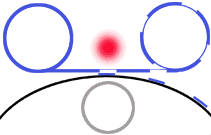 |
|
|
Inkjet Printer |
|
Forming
the Image | Controlling
the Image | Colour
Reproduction
|

